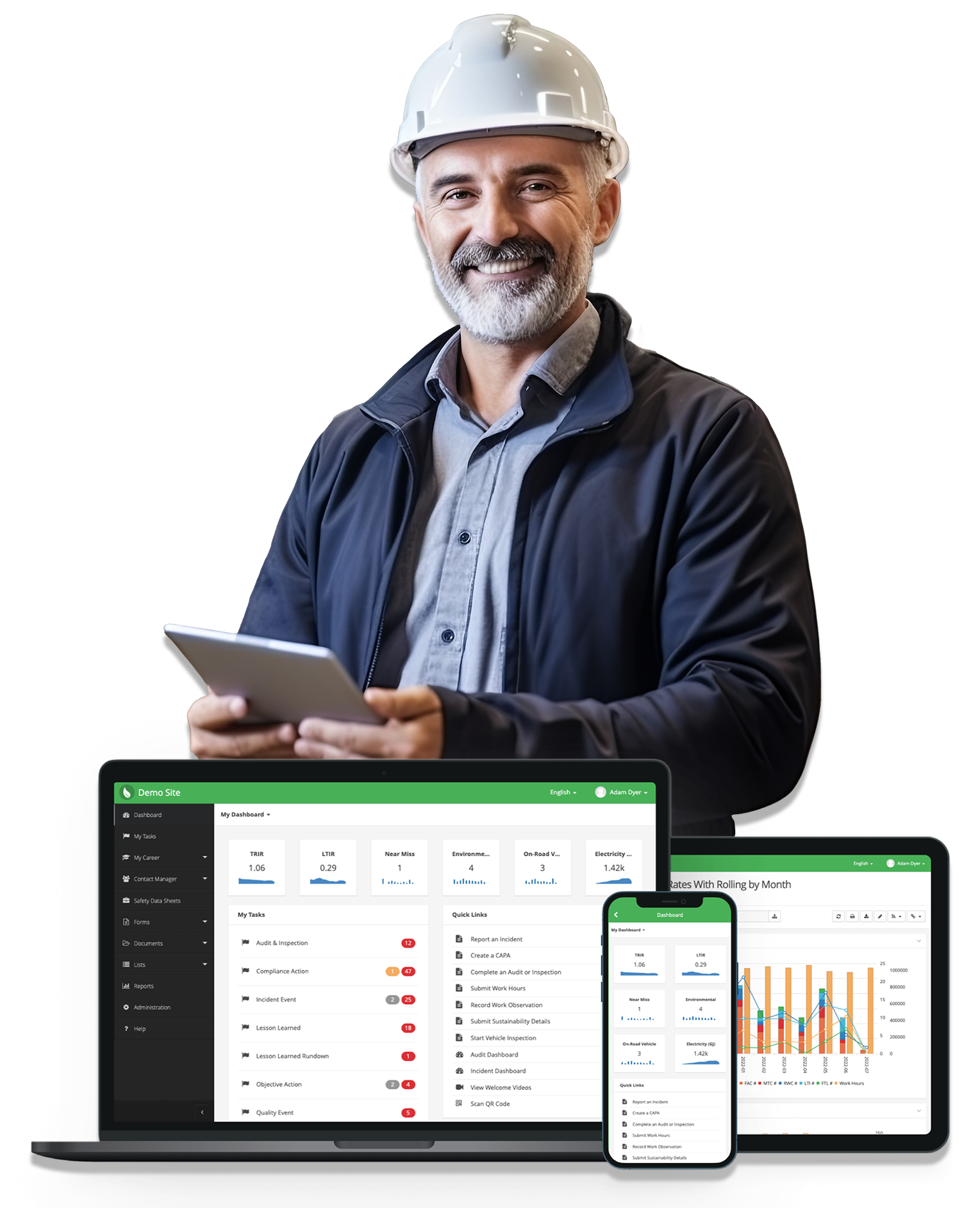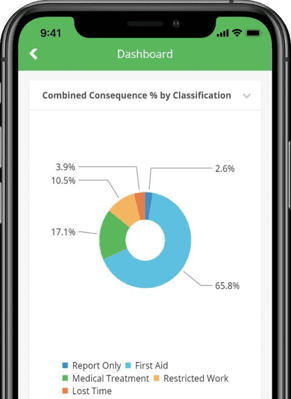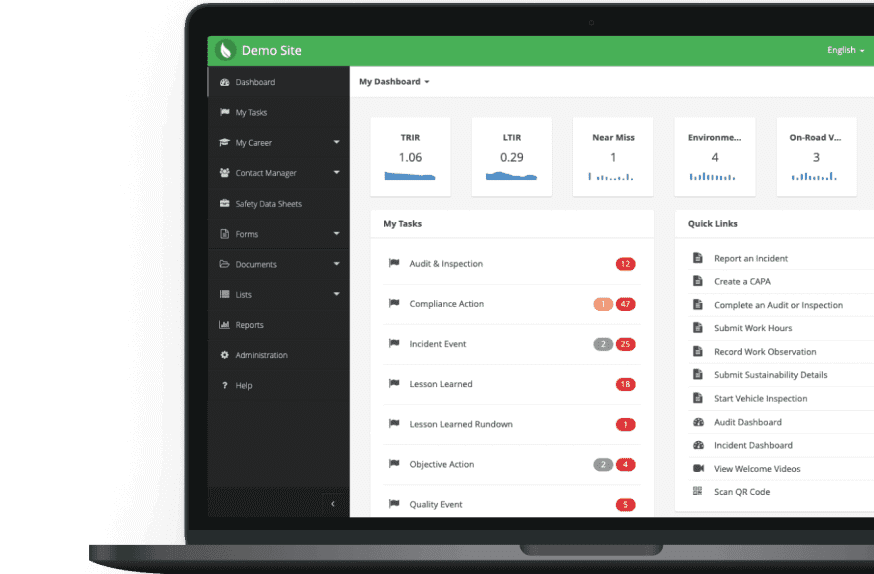Upgrade Your ESG & Sustainability Software System

-1.png)
Fully Integrated ESG Management and Reporting Software
Seamlessly collect and centralize ESG, sustainability, and aspects and impact data. Gain better visibility and company-wide transparency over all your sustainability and ESG program.
The #1 Sustainability Software For Your Company
Get Ready to Try EHS Insight
Start your free trial today and find out how much EHS Insight can help you manage, measure, and strengthen your company's EHS program.
An EHS Expert Will Guide You
An EHS expert will contact you to guide you and answer any questions you may have our best-in-class environmental, health and safety software solution.
Start Saving Time & Money
Let EHS Insight deliver a world-class solution for you - quick and simple implementation in days or weeks instead of months.
Companies Switch To EHS Insight To...
Lower Labor and Control Costs
EHS Insight helps companies save money with easy data management that captures, stores, and analyzes workplace health and safety information.
Save Time with Simple Implementation and Usage
Get ready to use EHS Insight ASAP with the solution that can help you in as quickly as days or weeks instead of months.
Easily Stay Fully Compliant
Gain full transparency with ease of viewing and analysis, and promote year-round compliance with all safety regulations.


Access Anywhere, Anytime - It Works Offline
EHS Insight works offline so you can access your platform anywhere, anytime.
Manage On-The-Go - Fully Mobile Friendly
Unlike many software, EHS Insight was built to be used on any device. With mobile capabilities, you have the flexibility of managing EHS on-the-go!
Everything You Need for Your Sustainability Program
Configuration & Customization Options
Adopt a solution based on best practices and standards, and modify and customize it to meet your company’s specific needs.
Integrated & Comprehensive Platform
Connect all your data with a comprehensive suite of modules, governance and data management, analytics, advanced workflows, and collaboration.
Cloud-Based & Works Offline
Never lose any records again; never miss a single data point in analysis again. Our cloud-based platform means you’re fool-proofing your company’s health and safety. Plus, it works offline!
What Are Companies Saying About EHS Insight?
EHS Insight has been instrumental in advancing our safety program. With employees spread out across the country, this program has made it easy to not only collect but share information in real time. The app and offline capability even allow our remote employees to stay compliant. The program is extremely easy to navigate. Site Supervisors that were given early access learned the system before formal training just by exploring. The support staff at EHS Insight is above and beyond. In the few instances there have been technical questions, the staff is quick to respond and thorough. If you are looking to consolidate incident reporting, corrective action tracking, audits, inspections, BBS observations, online training, safety meeting records, individual training records and a laundry list of other invaluable tools... do yourself and your company a favor and speak with the folks at EHS Insight.